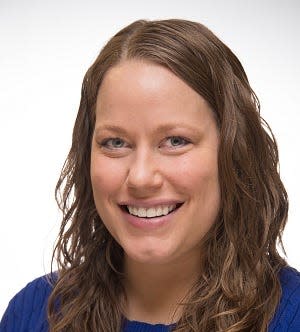Kent State among universities teaching reading improperly, new research claims

Earlier this year, Gov. Mike DeWine unveiled an ambitious plan to revamp reading instruction throughout Ohio.
If enacted by the General Assembly, his plan would require schools to adopt high-quality curricula aligned with the science of reading. This term refers to instruction that emphasizes phonemic awareness, phonics, fluency, vocabulary and comprehension — the five pillars of reading. The governor’s proposal also aims to stamp out disproven methods such as “three-cueing,” which wrongly encourages kids to guess at words rather than actually read them.
What parents need to know: What's 'balanced literacy' vs. 'science of reading'?
These important reforms could be undermined if teacher preparation programs — typically housed in colleges and universities — improperly train aspiring educators. If teachers enter the classroom ill-prepared in the science of reading, they will struggle to teach children to read effectively. They will also need expensive retraining. Some might even choose to quit out of frustration, something that could worsen staffing shortages in various parts of the state.
For the good of students and future educators, institutions of higher education need to align their instruction to the science of reading. But are Ohio’s programs doing this?

A recent report from our organization shines light on this important question. We commissioned the National Council on Teacher Quality to analyze the course materials of 26 Ohio undergraduate and graduate preparation programs in elementary reading. Together, these programs prepared 1,700 elementary teacher candidates during the study period, representing over 75% of total program completers at the time.
The study reveals highly uneven teacher preparation in the reading science. On a positive note, seven programs — including Youngstown State in Northeast Ohio — earned “A” ratings. These exemplary programs provide teaching candidates with a strong foundation in the science of reading. On the other hand, six programs received an “F,” including Kent State’s graduate school. Such programs inadequately cover the science, and often include multiple practices that are contrary to scientifically based literacy instruction.
Editorial: Ohio must ensure every student gets phonics instruction to improve reading skills
Other notable ratings among Northeast Ohio programs include the University of Akron’s respectable “B” and Cleveland State’s disappointing “D.” Overall, the state’s largest preparation programs received mixed reviews. Ohio State University received a “B” and “D” for its undergraduate and graduate programs, respectively, while Ohio University scored an “A” and Miami University an “F.”
Ohio policymakers must ensure that all preparation programs rigorously train candidates in the science of reading. To that end, we offer two suggestions.
First, state lawmakers should strengthen accountability for teacher preparation programs. While Ohio currently reviews and approves programs, it’s mostly a perfunctory compliance process. To strengthen this framework, policymakers should require in-depth, on-site reviews by literacy experts that gauge alignment with the science of reading. Programs that fail to train future teachers in the science should be required to undertake significant changes or have their state approval revoked.
Second, state lawmakers should ensure that aspiring teachers’ reading coursework covers every component of the science. Under current Ohio law, elementary- and middle-school candidates must take at least 12 credits of reading coursework. Of those, three must focus on phonics. That’s a critical start, as phonics is essential to effective instruction in the earliest grades. But the science includes other key components as well, such as fluency and comprehension. To make sure that all instructional pillars are part of a teacher’s training, legislators should clearly specify that the other nine credits must cover the remaining components.
Decades of research clearly establish the approaches and practices that best teach children to read. Unfortunately, inferior methods linger in too many elementary classrooms — and in many institutions of higher education as well. As a result, tens of thousands of children continue to struggle to read. The governor’s literacy plan is a bold step in the right direction. To put a capstone on it, state legislators should ensure that a next generation of teachers are well-prepared in the science of reading.
Jessica Poiner and Aaron Churchill are senior education policy analyst and Ohio research director, respectively, for the Thomas B. Fordham Institute, a K-12 education think tank based in Columbus.
This article originally appeared on Akron Beacon Journal: Ohio’s future teachers need strong training in the science of reading
